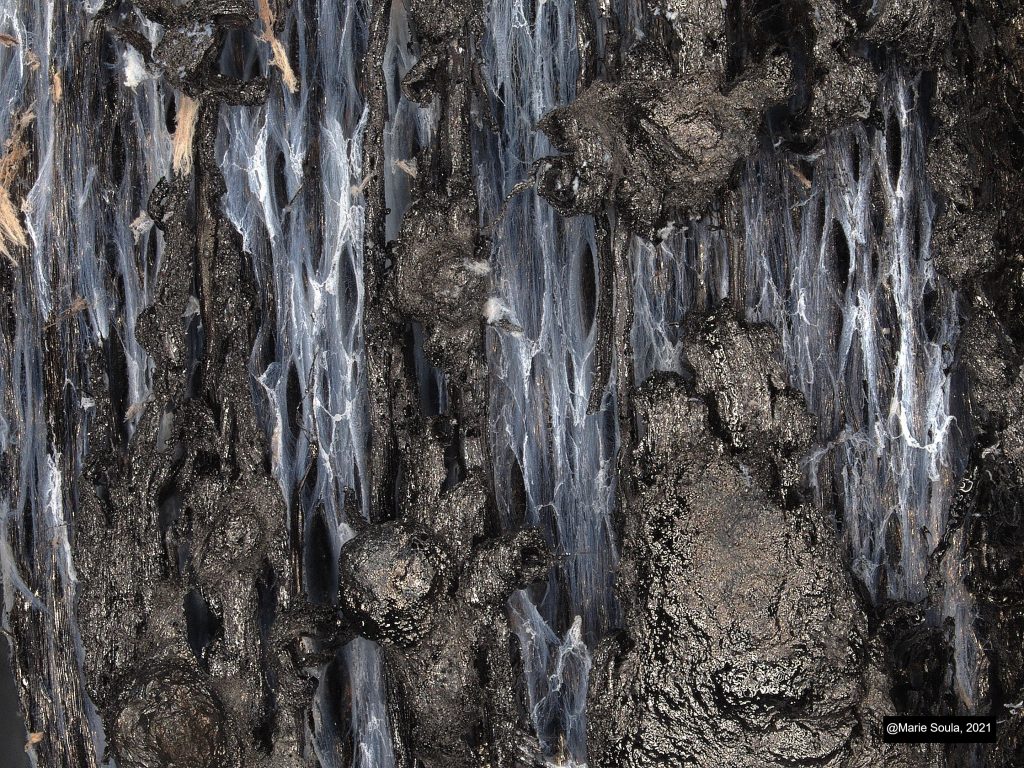Char-mant bouleau jaune / Char-ming yellow birch

Marie Soula, CRIF, Microscope digital VHX-5000
Malgré ses propriétés remarquables, le bois est à ce jour sous utilisé dans nos intérieurs à cause de sa forte inflammabilité et des risques associés. Des traitements retardateurs de flamme sont ainsi développés et l’étude des résidus de bois est une étape cruciale dans la compréhension des mécanismes de protection. Ici, les retardateurs de flamme phosphorés permettent de renforcer un comportement naturel du bois en présence de feu : le charbonnement. La formation du char, qui est accélérée par la décomposition des composés phosphatés, ralentit la combustion et préserve le reste du matériau. Cette couche d’isolation thermique et gazeuse, encore visible par les amas noirs et brillants, est suffisamment efficace pour préserver la structure fibreuse du bouleau jaune, offrant un char-mant spectacle.
—————————————-
Despite its remarkable properties, wood is to date under-used in our houses due to its high flammability and associated risks. Flame-retardant treatments are thus developed, and study of wood residue is important in the understanding of protection mechanisms. Here, phosphorated flame-retardants support a natural behavior of wood when exposed to fire : charring. Char formation, which is accelerated by phosphate compounds decomposition, slows the wood combustion, and preserve the remaining material. This thermally and gaseous isolation layer, still visible with black and shining mass, is efficient enough to protect the delicate fibrous structure of yellow birch, offering a char-ming sight.
Directrice de recherche : Véronic Landry
